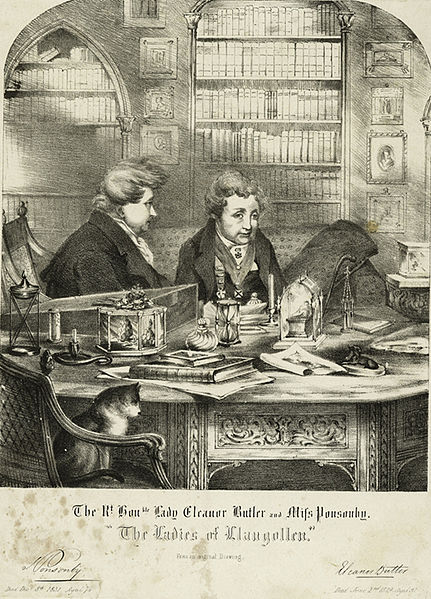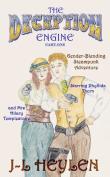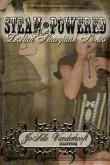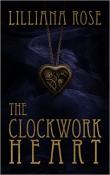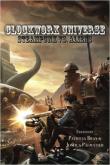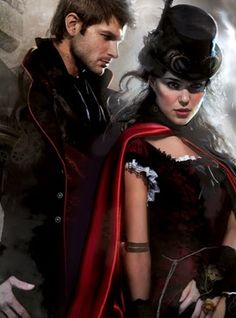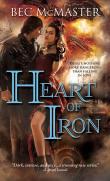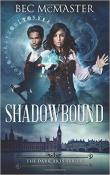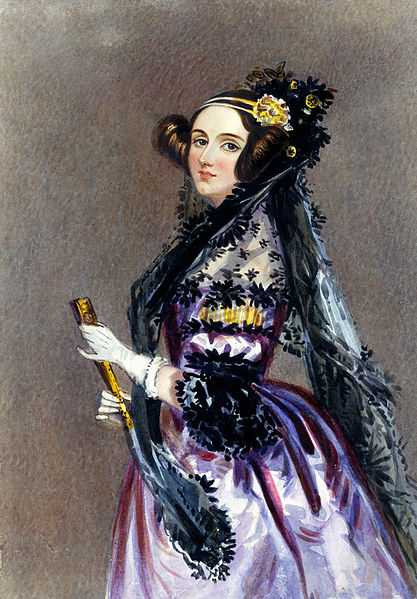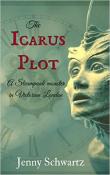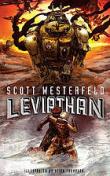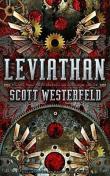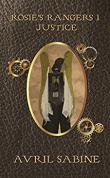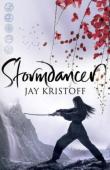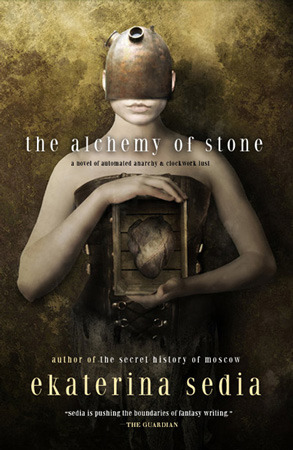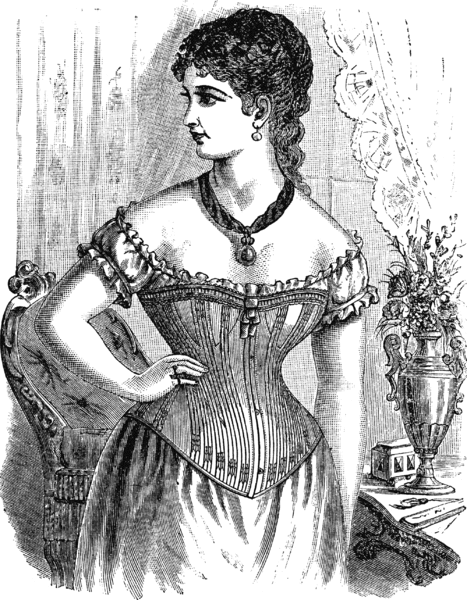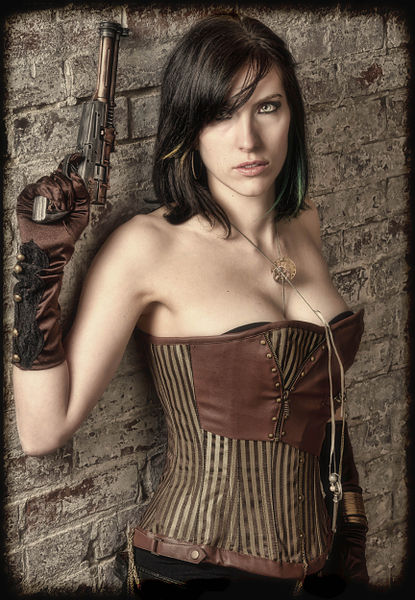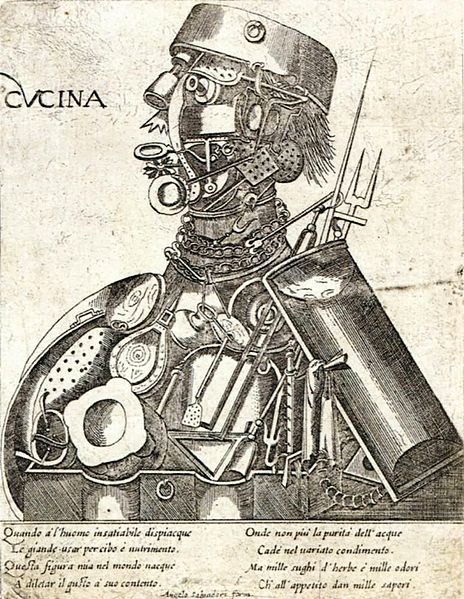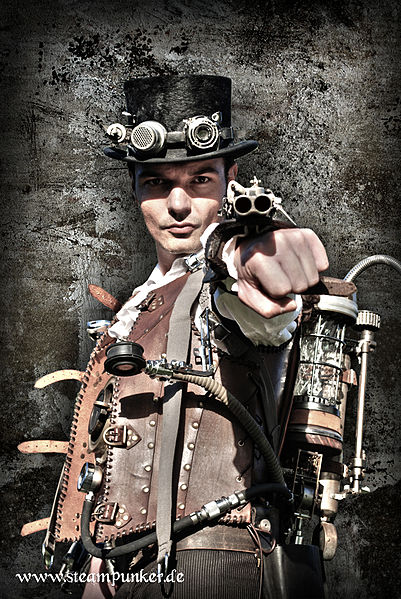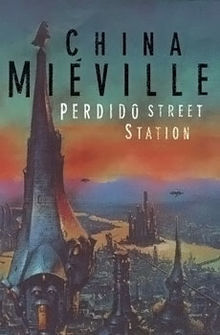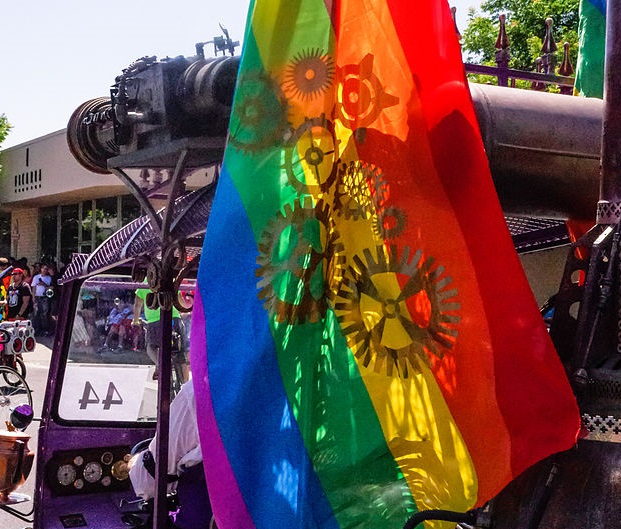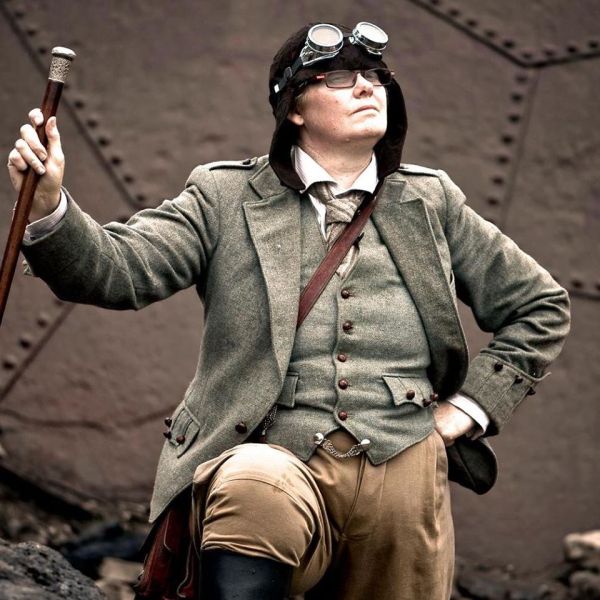AustLit
-
-
-
Early in The Alchemy of Stone, a steampunk novel by Russian author Ekaterina Sedia, the protagonist Mattie (an alchemist and automaton) is approached by a client who will only hire women. The client demands to know Mattie's gender identity: not just whether Mattie appears to be a woman (she is distinctly coded 'feminine'), but whether she identifies as a woman. Mattie says she does, because she was created female and because of the clothes she wears. The client objects: what if she changed her clothes?
'But I can't,' Mattie said. 'The shape of them is built into me – I know that you have to wear corsets and hoops and stays to give your clothes a proper shape. But I was created with all of those already in place, they are as much as part [sic] of me as my eyes. So I ask you: what else would you consider me?' (p.18)
This moment resonates with the novel's readership, quoted over and over in reviews. In an interview in Fantasy magazine, Sedia responded to a question about the construction of Mattie by saying:
'For me, it was a very imperfect analogy to human anatomy – after all, the automaton has no primary sex characteristics, so there’s no reason to think of her as female. And yet she was designed as female – and her corset and hoops and whalebone stays play a role of secondary sex characteristics. So to Mattie, this is what makes her a woman – an objective set of physical characteristics corresponding to gender. Could I be trying to say anything about essentialism and gender identity? Who knows. (http://www.fantasy-magazine.com/non-fiction/articles/ekaterina-sedia-author-of-the-alchemy-of-stone/)
But, as she notes elsewhere in the interview, 'books that are explicitly identified as concerned with, say, gender politics will be perceived as agenda books – in a way that books with a strapping hero who restores the heir to the throne and marries a princess would not be, even though both are equally political'. Nowhere, perhaps, is this more evident than in steampunk, where the corsets are, both literally and ideologically, worn on the outside. Mattie's integral stays and hoops resonate with steampunk readers because they mark a point of concern in the genre: how liberated are the liberated women of steampunk?
-
Analyses of gender in steampunk emphasise the corset, and for good reason. The corset is highly visible in steampunk cosplay, where it is worn over the clothes in an inversion of its historical function as foundation wear.
The corset has become a synecdoche for perceptions of prudishness embodied in Victorian fashion – more than the fragile shoes of the 1830s, the restrictive cage crinolines of the 1850s and 1860s, the narrow skirts of the 1880s, the corset represents all that was delicate, breathless, and restrained in Victorian womanhood.
Unsurprising, then, that the corset is a site for resistance in modern steampunk. The question among critics, however, is whether it qualifies as resistance if you are still wearing a corset.
Julie Anne Taddeo, who argues for the corset as an emancipatory object, buttresses her argument with Mary Poovey's seminal Uneven Developments: The Ideological Work of Gender in Mid-Victorian England (1988), which isolated fracture lines in nineteenth-century gender models well before the 'New Woman', and Leigh Summers's Bound to Please: A History of the Victorian Corset (2001), which repositions the corset as a site of politicised gendered power, which women actively manipulated. However, as both Taddeo and Summers acknowledge, this power is (somewhat ironically) restricted. Most significantly, it splits on class lines: the corset as worn by working-class women was, firstly, a contested point among the middle classes and, secondly, necessarily modified to suit the need for greater mobility (see 'Yes, They Did Wear Them').
-
Any freedom that the corset promises remains embedded within broader socio-economic structures whose own restrictions often remain unexamined. Similarly, the pro-corset arguments that Taddeo highlights among steampunkers foreground but do not explicitly address the inherent paradox in corsets as an object of freedom. One example emphasises that they key point is that 'we lace up by choice': 'A steampunk heroine,' writes Taddeo, citing a steampunker 'may have to cope with zombie invasions and cyborg attacks, "but she will do it while sporting a 20 inch waist. If that does not illustrate the power of women, I don't know what does."' (61).
But the power here is largely visual and imaginative (and erotic): the corset on the page does not need to take into account any deep breaths a zombie-fighting heroine might need to take.
Mary Anne Taylor specifically argues that 'The notion of "choice" is not enough to show how neo-Victorian style is transgressive of the Victorian Era' (47). Taylor argues that 'Steampunk is an aesthetic in which gender dichtomies are blurred, gender bending is privileged, and women are written in steampunk literature as beyond traditional gender roles' (39). But, she emphasises, it does not necessarily follow that 'steampunk exists as an egalitarian ideal where the subculture is inclusive of women' (39).
Central to Taylor's argument is the notion that 'Because so much of Victorian culture was informed by overtly sexist signifiers, the corset for example, it is unclear if Victorian style can be reappropriated to create a meaning or feeling of empowerment' (45).
For Taylor, the paradox of corsetry is too great: blending 'masculinised' freedoms with the 'feminising' effect of a corset is merely 'creating the very same ideological dichotomy that steampunk is trying to leave behind' (49).
Taylor’s argument focuses more on the culture than on the texts, but she does acknowledge, in passing, that steampunk 'is far more progressive in fiction than it is in modernity' (43), even isolating Scott Westerfeld's cross-dressing heroine of Leviathan (49). But how do the texts present gender? Is Sedia's Mattie an exception? Is it all corsets in steampunk, or is the popular synecdoche also a misleading one?
-
Corsets are, if not ubiquitous, certainly common on the covers of steampunk novels, and not uncommon within the pages. This is particularly the case in steampunk romances (or bustlepunk): as Taddeo notes, 'The unlacing of the steampunk corset [is] a scene that appears in almost every steampunk romance' (62). But the heroines within the texts are not always corset-clad. In 'Machine Maid' by Margo Lanagan, for example, the maid of the title is ostensibly a clockwork domestic servant, but also serves as a silent sexual partner for Mr Goverman, the owner of a remote station deep in the Australian bush. The new Mrs Goverman unwittingly triggers the maid's shadow functions when she makes a sibilant noise of irritation:
'suddenly, smoothly, expansively, she lifted her arms from her sides where she knelt, manipulated her lovely fingers, her beautifully engineered elbow and shoulder joints, and drew her loosened bodice down from her shoulders, so that her bosom, so unbodily and yet so naked-seeming, was exposed to the hot study air' (198-199)
Here, the fetishisation of Victorian undergarments is stripped as bare as the maid herself. Mr Goverman has no fantasies of corsets, which are presumably something of a banal object to him. The most prominent marker of neo-Victorian femininity is negated in this alt.history version of how a nineteenth-century man might value an automaton.
-
For entirely different reasons, Ivana March in Jenny Schwartz's The Icarus Plot eschews corsets when she dresses as a prostitute for a covert examination of the slums:
She'd dispensed with a corset tonight for a variety of reasons. One, if she had to run, she needed to be able to breathe freely and two, her own modest underwear would have been revealed by the low neckline. She doubted a floozie wore white linen embroidered with violets.
For Ivana, the corset is both a marker of her status in its quality (as Leigh Summers also notes in 'Yes, They Wore Corsets') and a reminder of the restraints that her class enforces. As she later says to her companion, 'I'd never really thought about safety before then. I lived in the bubble of high society with maids and footmen. Real life was meant to happen to other people'. The lack of a corset in this case is emblematic of a broader concern with how gender operates in a steampunk Victorian age: Ivana's toyshop is a front for labour-saving devices and self-protection tools for women, including an 'electrifier' (essentially a taser). In the companion novella, The Lion and the Mouse, the devices' inventor, Anthea Fairleigh, reflects that
'The time women of all classes stole for themselves from household duties could then be used for their own purposes: to study, to meet friends, to simply rest.'
Ivana is more militant than her collaborator: driven by the memory of the brutal rape and murder of an upper-class schoolfriend by the young aristocrat who was courting her, she focuses on safety devices: 'powderpuff sneezes', 'acid daisies', and sharpened hairpins with sleeping powder in their hollow heads, as well as the electrifer. It is not surprising that these women do not wear corsets: it is intriguing, however, that Schwartz specifically points out their absence. Here is something of the 'punk' in steampunk that Ekaterina Sedia mentions in her introduction to The Mammoth Book of Steampunk when she talks of 'imagining what would happen if technology were used to uplift rather than oppress'. The technology does not need to be a clockwork army or a dirigible fleet: sometimes it is enough to imagine an alt.Victorian world where labour-saving devices allow women to take off their corsets and rest.
-
But while corsets are front and centre in steampunk, male characters can also find themselves scripted into carefully controlled roles. As Mirko M. Hall and Joshua Gunn note, the nineteenth century was a dichotomous space, and the ‘angel in the house’ was counter-balanced by ‘a public sphere of agonistic, competitive males in the world of politics and employment’ (6). As such, they argue,
'those figurations of male identity in the popular imaginary of Steampunk still tend to emulate normative Victorian masculinity' (7).
Steampunk novels abound with men of action: the new Earl of Somer in The Icarus Plot, for example, is a noted explorer still trying to find his way through London. Nigel Taylor in Gerry Huntman’s 'Halo in the Sky' is a war hero who commands a fleet of airships. Asher Quigley in Coleen Kwan’s duo of novels is an inventor whose time machine manages to wipe the woman he loves from history. Explorers, sailors, inventors: among the dukes and earls, steampunk is also rich in the types of characters who were seen to have driven progress in the nineteenth century, men who
'no longer received his status from aristocratic origins or positions of patronage, but rather from his own self-discipline and pursuit of moral and intellectual excellence' (Hall and Gunn, 6).
However, self-discipline and the pursuit of excellence in extra-legal contexts is also an element of steampunk: rebels and pirates also appear frequently in steampunk novels – as villains, but often as heroes. From the genetically engineered rebel Ariq in The Kraken King to Black Jack Knight in The Adventures of Miss Upton and the Sky Pirate, the genre evokes the shade of Captain Nemo – Annie Seaton’s Winter of the Passion Flower even includes a brooding submarine captain.
-
But the upper-middle-class nineteenth-century gentleman as constructed in neo-Victorian stories both shapes and is shaped by the world into which he has been created (see Mills, 162-163).
That is to say, the neo-Victorian world demands the patriarchalism of its originating century, but those origins are dragged and warped under the influence of the postmodern.
Much steampunk, then, carries a consciousness of this masculine dichotomy: writing of China Miéville’s Perdido Street Station, for example, Aishwarya Ganapathiraju argues that ‘the masculinities of each character are both postmodern and Victorian’ (4), but that this masculinity is not a simple function of the social structure, but is in constant, diegetic communication with it (6).
On a surface level, many bustlepunk novels, with their strong focus on romance, involve something of a working through of masculinity, as the male characters who are scripted as pirates, rebels, and warriors also need to come to terms with their female counterparts. Similarly, steampunk characters with heavily mechanised bodies often experience a crisis of masculinity in a world that still demarcates the biological, the clockwork, and the cyborg. The narrator of Peter M. Ball’s 'Clockwork, Patchwork, and Ravens', for example, speaks of himself as a ‘half-man’ and fantasises about an unconscious patient:
‘I dreamt of kissing her again, dreamt of her waking up and looking on my copper mask and grafted limbs without the inevitable shudder’ (246).
In the end, he sacrifices himself in a physical struggle that he knows he cannot win against the swaggering, hyper-masculine street gangs of half-corvid men from whom the patient was rescued. A more gentle crisis of masculinity occurs in Andrew McKiernan’s 'Calliope: A Steam Romance', in which an office clerk falls victim to a scam that uses a hyper-feminised helplessness (an automaton, literally chained by the pipes that provide her with steam) to invoke in him a specific, half-protective, half-eroticised response.
-
But where sexuality can be a moment of anxious masculinity in steampunk, it can also be a moment of liberation. Nowhere is this more evident than in the proliferation of same-sex steampunk romances. In keeping with the sense of liberation that steampunk claims to offer its female characters, the strength of numbers here lies with female-female romances: in our research, only Sean Kennedy’s delightfully named Wings of Equity (2010), in which an airship pilot falls in love with a man with mechanical wings, is a male-male steampunk romance.
But Australian authors often touch on lesbian romance. Sometimes, the touch is light: Peg, a winged warrior in an alt.London at war in 'Of War and Wings' (2014), barely has time to dream of the one kiss she shared with Arabella Dray, the Steel Eagle, before Arabella was killed in battle.
Elsewhere, it is the steampunk world itself that enables a freedom of romantic expression:
-
Phyllida Thorn, in J-L Heylen’s two-part The Deception Engine, 'flies under the radar by cross-dressing' and is able to 'swank and swagger with the best gentlemen of the Antipodes' (back-cover blurb) in part because her colonial Sydney Town is an alt.history steampunk version. Similarly, Lilliana Rose’s lesbian romances – The Clockwork Heart (2015) and the duology Circus Escape (2014) and Circus Games (2016) – navigate same-sex romance by buttressing it with the steampunk-enabled liberation of mechanical technology and economic independence.
No wonder, then, that same-sex romances are one of the areas where steampunk becomes noticeably intersectional, drawing in questions of race and identity alongside gender and sexuality.
When Stephanie Lai published 'One Last Interruption Before We Begin’ (2011), the love story of a Malaysian shipping clerk and a colonial woman, in an anthology of lesbian steampunk stories, it appeared alongside works by authors such as Nisi Shawl and Zen Cho, whose work, like Lai’s, explores not only sexuality but also racial identity and the effect of colonisation.
The nineteenth century may, to modern eyes, be one marked more by taboos than by freedoms. But as same-sex steampunk romances suggest, the destruction of one taboo makes the destruction of others an easier proposition.
You might be interested in...


